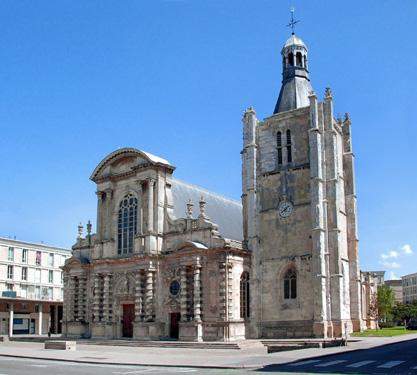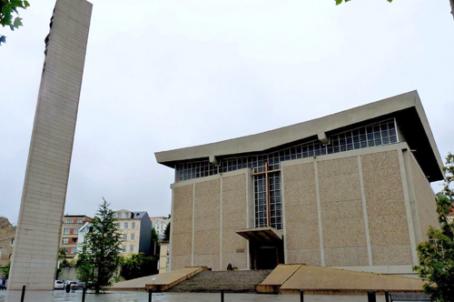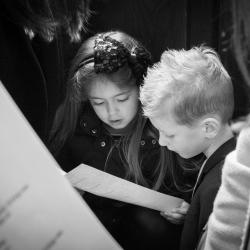Havre Cathedral
The building, completed in 1630, underwent several phases of destruction, leading to modifications. The first one in 1694, when it was burnt down by the English. The second came with the bombings of 1944, which led to a major destruction of the building. Auguste Perret, architect, is in charge of the restoration of the church, completed in 1992.
About this building
Oriented church with a longitudinal plan, flanked by a bell tower on the south wall. The chevet is polygonal. The main façade is Roman style and rises on two levels, the first one with Ionic columns and portals surmounted by a tympanum and oculis. The second level is surmounted by a semicircular pediment.





